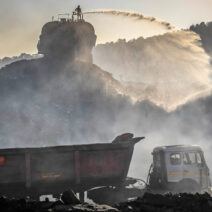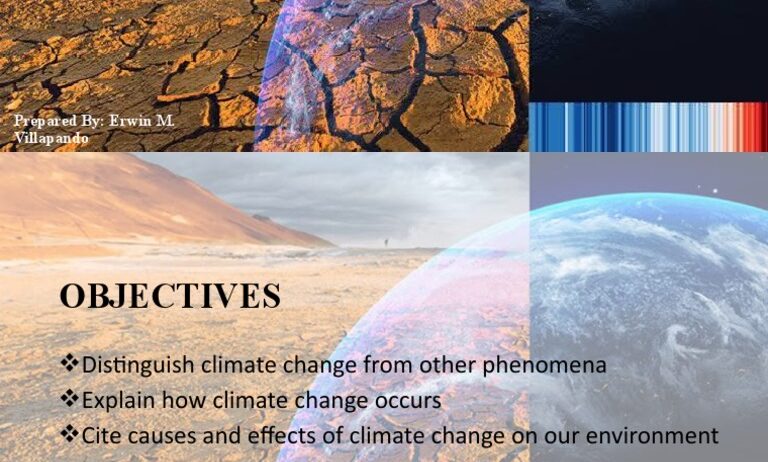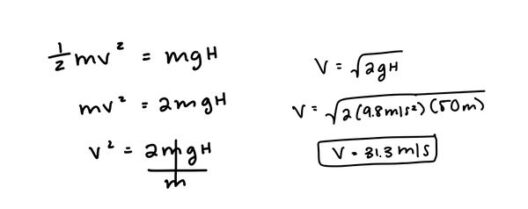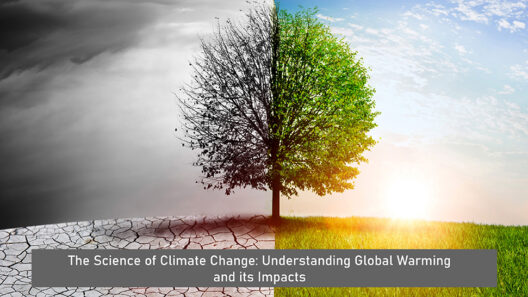The ozone layer plays an indispensable role in safeguarding life on Earth by absorbing the majority of the sun’s harmful ultraviolet (UV) radiation. Its depletion, notably evidenced by the seasonal ozone hole over Antarctica, raises profound concerns for both environmental scientists and the general populace. Understanding the intricate interplay between global warming and ozone layer dynamics is crucial to addressing current and future challenges.
Initially, the ozone layer was jeopardized by human activity, primarily through the release of ozone-depleting substances (ODS) like chlorofluorocarbons (CFCs). These compounds became infamous after they were found to aerate the stratosphere, leading to a daunting thinning of the ozone layer, particularly over Antarctica. As exposure to increased UV radiation mounts, detrimental effects on human health, aquatic ecosystems, and terrestrial flora proliferate. Such conditions prompted a global response, culminating in the landmark Montreal Protocol of 1987, which catalyzed efforts to curtail the use of ODS.
The multifaceted relationship between the ozone layer and global warming is critical in evaluating whether the ozone hole might make a resurgence. Recent scientific research indicates that the measures instituted by the Montreal Protocol have produced a notable recovery of the ozone layer. Predictions suggest that by the middle of the 21st century, the ozone hole may diminish significantly or potentially close altogether. However, the story does not end there; the world faces a more intricate crisis: global warming.
Global warming and climate change are propelled by the accumulation of greenhouse gases (GHGs) such as carbon dioxide (CO2) and methane (CH4) in the atmosphere. As temperatures rise, atmospheric circulation patterns undergo alterations, which can impact the dynamics of the stratosphere. This, in turn, can affect ozone stability. While the ozone layer’s recovery is encouraging, ongoing climate change could paradoxically lead to temporary fluctuations in ozone concentrations.
One particular concern is the potential for more widespread and severe ozone depletion in the future due to climate change. Warmer temperatures can engender changes in stratospheric conditions, augmenting the likelihood of ozone-depleting chemical reactions. Furthermore, increased moisture in the stratosphere may exacerbate polar stratospheric cloud formation, facilitating chemical reactions that deplete ozone. This duality—advancement in recovery coupled with the risk of further depletion—illustrates the complexity of atmospheric chemistry.
Scientific assessments have identified that while the global average temperature is on the rise, some regions may experience cooling effects in the stratosphere, particularly over the poles. Such cooling can amplify the stratospheric conditions favorable for ozone depletion, especially during winter months. The cold temperatures result in an increase in polar stratospheric clouds, upon which chemical reactions leading to ozone depletion occur. A cyclical pattern may ensue, where warming at lower altitudes influences stratospheric processes that paradoxically encourage ozone depletion.
The interaction between global warming and ozone dynamics is not simply linear. Researchers emphasize the urgency of continued monitoring of both ozone and climate changes. Satellite observations provide invaluable real-time data on ozone concentrations, facilitating assessments of the effectiveness of international policy measures. Without vigilant monitoring, the nuanced relationship may yield unforeseen consequences that compromise both ecological and human health.
While the recovery of the ozone layer is undeniably a sign of international success in environmental governance, it is imperative not to become complacent. The emergence of new challenges continues to test our commitments. For instance, the proliferation of novel industrial chemicals, particularly some alternatives to CFCs, raises concerns about their potential to impact ozone levels. The complexity of this situation cannot be overstated—what expedites recovery in one domain may hinder it in another.
Public engagement is vital in catalyzing ongoing efforts to protect the ozone layer. Educational campaigns that illuminate the intricacies of ozone science alongside broader climate issues can effectively mobilize advocacy and support for eco-friendly practices. Stakeholders, including governments, businesses, and individuals, each have a role to play in perpetuating ozone recovery and mitigating climate change challenges.
Furthermore, legislative frameworks like the Kigali Amendment to the Montreal Protocol, which seeks to phase down hydrofluorocarbons (HFCs), reflect the adaptable nature of global environmental policies in response to emerging threats. These measures showcase a collective commitment to fostering a sustainable future, and adherence to such agreements is more crucial than ever.
In conclusion, the question of whether the ozone hole might return is inherently tied to the broader considerations of climate change and human activity. While the strides made in ozone layer recovery are commendable, vigilance and proactive engagement must remain at the forefront of our efforts. As we navigate the complexities of environmental stewardship, it is imperative to recognize the interconnected nature of atmospheric phenomena. The fate of the ozone layer is not merely a story of depletion and recovery; it is a critical chapter in the ongoing narrative concerning our planet’s health and humanity’s future on it.







